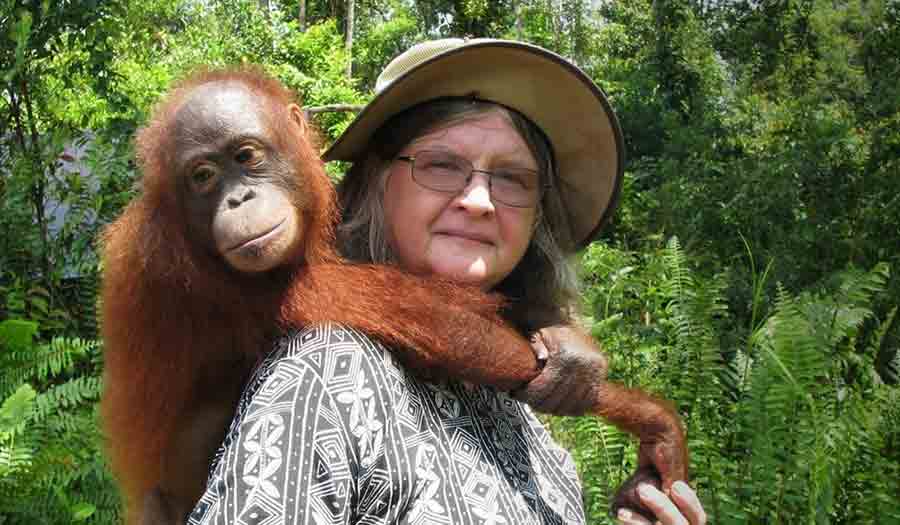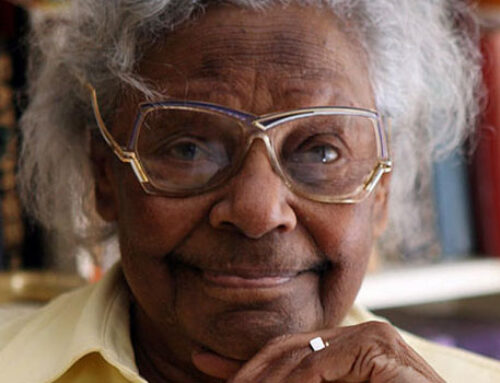As a young child, Birutė’s head was filled with visions of far off forests and exotic creatures. The first book she borrowed from the library was a tale about a mischievous little monkey named Curious George. When she grew older, she was swept up by the National Geographic adventures of Jane Goodall and Dian Fossey.
Born in Germany,Biruté’s parents were Lithuanian refugees after World War II. When she was two years old, the family moved to Canada.
Moving to Los Angeles, Biruté enrolled at the University of California, where she studied psychology, archaeology, and anthropology, earning her bachelor’s degrees in psychology and zoology from UCLA and the University of British Columbia. She earned her master’s degree in anthropology from UCLA in 1969.
During her graduate studies, Biruté met famous paleoanthropologist Louis Leakey, whom she approached about studying orangutans in their natural habitats. Leakey and the National Geographic Society agreed to establish a research facility in Borneo.
Her research became the basis of her doctoral studies, and she earned her doctorate in anthropology from UCLA in 1978.
In 1971, Biruté and her then-husband, photographer Rod Brindamour, arrived in Indonesian Borneo. Biruté was the third of a trio of women appointed by Leakey to study great apes in their natural habitat. Called “The Trimates” by Leakey, the other two women included Dr Jane Goodall, who studied chimpanzees, and Dr Dian Fossey who studied mountain gorillas.
Before Leakey and the National Geographic Society helped Biruté set up her research camp, the orangutan was the least understood of the great apes. Biruté Galdikas went on to greatly expand scientific knowledge of orangutan behaviour, habitat and diet.
“I feel very strongly that I was born to work with and study orangutans. There’s something about them that always “spoke to me”. I remember one of the first photographs I saw of an orangutan when I was a child. From the upper lip up he could have had been a human being. There was something about the eyes in that picture that reflected our own human eyes. Orangutans are 97% human in the sense that they share that percentage of their genes with us. I remember years ago when a Taiwanese man looked at me and said: “You were an orangutan in your previous life”. Maybe I was (she says laughing). I find it easy being around them. I think I was born to be with orangutans.”
(from an interview with Huffington Post, 2014)
Biruté remained there for over 30 years while becoming an outspoken advocate for orangutans and the preservation of their rainforest habitat, which is rapidly being devastated by loggers, palm oil plantations, gold miners, and unnatural conflagrations.
Her conservation efforts have extended well beyond advocacy, largely focusing on rehabilitation of the many orphaned orangutans turned over to her for care. Many of these orphans were once illegal pets, before becoming too smart and difficult for their owners to handle.
Biruté’s rehabilitation efforts through Orangutan Foundation International (OFI) also include the preservation of rainforest. The ongoing birth of new orangutans among the formerly-rehabilitated adult orangutans at Camp Leakey is part of what makes it the longest continual study of a single species.
While campaigning actively on behalf of primate conservation and preservation of rainforest, she continues her field research, among the lengthiest continuous studies of a mammal ever conducted. Her husband, Pak Bohap, was a Dayak rice farmer, tribal president, and co-director of the orangutan program in Borneo.
Biruté Galdikas is currently a professor at Simon Fraser University in Burnaby, British Columbia, and Professor Extraordinaire at Universitas Nasional in Jakarta, Indonesia. She is also president of the Orangutan Foundation International in Los Angeles, California.
Interview with Dr Biruté Galdikas on Orangutans and saving the forests of Tanjung Puting National Park.

Orangutan Foundation International (OFI) is a nonprofit organisation dedicated to the conservation of wild orangutans and their rainforest habitat.
> Website




